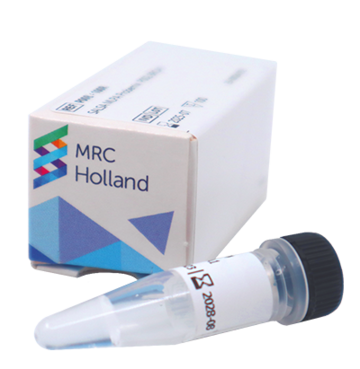Germline defects in the dystrophin (DMD) gene are the most frequent cause of Duchenne muscular dystrophy (DMD) and Becker muscular dystrophy (BMD). DMD and BMD occur almost exclusively in males as they are inherited in an X-linked recessive manner. DMD usually has an early onset in childhood with delayed milestones, which include delays in sitting and standing independently. Proximal weakness causes a waddling gait and difficulty in climbing. DMD is rapidly progressive, with affected children being wheelchair dependent by the age of 13. Respiratory complications and cardiomyopathy occur in individuals with DMD after the age of 18 and a few survive beyond the third decade of life. In contrast, BMD has a slower rate of progression and patients on average survive until their mid-40s. More information on both conditions is available at http://www.ncbi.nlm.nih.gov/books/NBK1119/.
Deletions and duplications of complete exons in the DMD gene are the most frequent cause of DMD/BMD and are usually missed by standard sequence analysis. Most of these deletions and duplications can be detected by the MLPA technique and hence MLPA complements sequence analysis of the DMD gene. Approximately 60-70% of mutations found in patients with DMD and BMD are deletions. Duplications in the DMD gene are found in 5-15% of DMD patients and 20% of BMD patients, respectively (Duan et al. 2021). Best practice guidelines on molecular diagnostics in DMD and BMD have been published (Abbs et al. 2010, Fratter et al. 2020).
Although DMD and BMD primarily affect males due to its X-linked recessive inheritance, female carriers can occasionally manifest symptoms due to skewed X-inactivation (Korotkova et al. 2025; Sun et al. 2024; Yoshioka et al. 1998). In these cases, the X chromosome carrying the normal DMD gene is preferentially inactivated in a significant proportion of cells, leading to reduced dystrophin expression. This can result in a clinical phenotype ranging from mild muscle weakness to a presentation similar to DMD or BMD.





